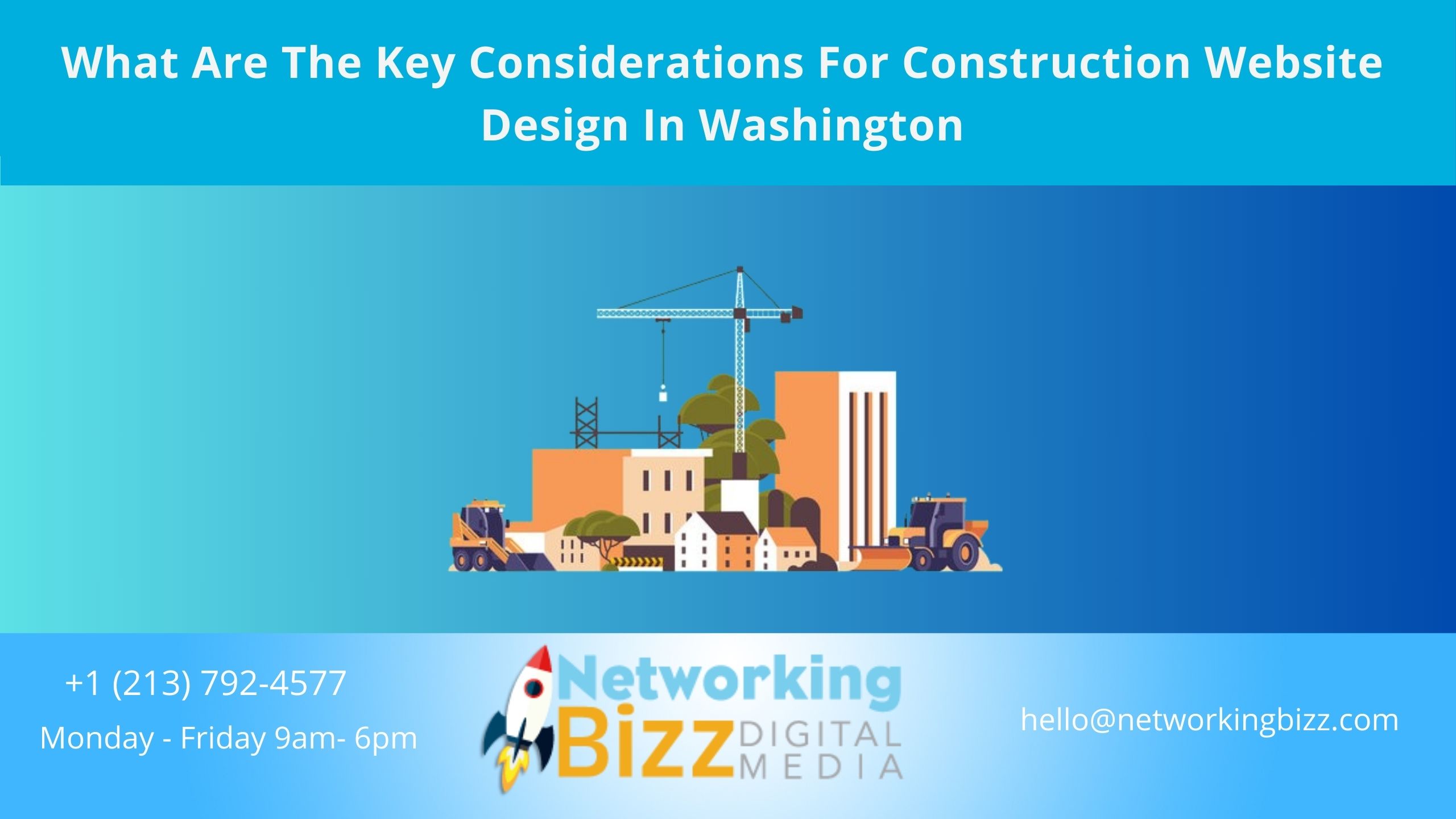Introduction
In the digital age, a strong online presence is critical for firms in many industries, including construction. A well-designed website is an effective tool for recruiting new clients, demonstrating competence, and driving business growth. However, developing a construction website takes careful consideration of a variety of elements to maintain its efficacy and relevance in a competitive market. This essay goes into the important elements for building a successful website in the construction business, with a particular emphasis on combining these ideas with Washington ‘s expertise.
Understanding The Audience
Understanding the target audience is essential for any effective website design. In the construction sector, the audience often consists of a wide range of stakeholders, such as property developers, architects, contractors, and homeowners. When it comes to construction websites, each group has its own set of demands, preferences, and expectations. Washington emphasizes completing thorough market research and using tools like user personas to learn about the demographics, preferences, and pain points of the target audience. Businesses that understand their needs can adjust their website content, layout, and features to resonate with their target audience, hence improving user experience and engagement.
Responsive Design
With the rise of smartphones and tablets, providing a consistent user experience across several devices is critical. Responsive web design is an important feature of modern website creation, particularly in the construction business, as stakeholders frequently access information while on the go. Washington pushes for website design that adapts smoothly to different screen sizes and resolutions, ensuring that consumers get the best viewing experience possible regardless of device. This method not only increases user pleasure but also helps search engine rankings, as search engines such as Google emphasize mobile-friendly websites in their algorithms.
Visual Appeal And Branding
In a visually-driven business like construction, aesthetics are critical for catching people’s attention and conveying corporate identity. Washington emphasizes the value of using visually appealing components like high-quality photographs, videos, and graphics to exhibit finished projects, highlight skills, and generate a sense of professionalism. Consistent branding components, such as color schemes, font, and logos, should be effortlessly interwoven throughout the website to strengthen brand identity and recognition. Construction companies may set themselves apart from competition and leave a lasting impression on visitors by developing a visually appealing and integrated online presence.
Intuitive Navigation
A construction website’s navigation should be intuitive and user-friendly to allow for easy access to vital information. Washington suggests using a clean and organized navigation structure, complete with logical categories and menus that direct visitors to the needed content quickly and efficiently. Incorporating search functionality also allows consumers to easily find certain information or services, hence improving usability. Construction websites that prioritize logical navigation can reduce bounce rates, enhance engagement, and encourage visitors to explore additional pages, resulting in conversions and inquiries.
Content Strategy
Any successful website relies heavily on compelling and helpful content. Content in the construction sector serves a variety of functions, including demonstrating competence, teaching visitors about services and procedures, and establishing confidence with prospective clients. Washington underlines the necessity of creating a complete content strategy that is tailored to the demands and tastes of your target audience. This strategy may contain both written content (project case studies, blog articles, and service descriptions) and multimedia content (videos, infographics, and virtual tours). Construction websites can attract qualified leads by delivering valuable and relevant information that positions them as authoritative sources in their industry.
SEO Optimization
In today’s competitive internet world, visibility is critical for obtaining organic traffic and generating leads. Search engine optimization (SEO) is crucial for ensuring that construction websites rank high in search engine results pages (SERPs) for relevant keywords and phrases. Washington emphasizes the need for doing keyword research to find high-value keywords connected to construction services, regions, and expertise. These keywords should be deliberately placed into website content, metadata, and URLs to increase search engine exposure and targeted visitors. Additionally, Washington recommends boosting website speed, applying structured data markup, and gaining high-quality backlinks as vital SEO methods for increasing online visibility and outranking competition.
Integration Of Multimedia Elements
In the construction sector, visual representations of finished projects and current work are especially appealing to potential clients. Washington argues for the strategic use of multimedia components including photographs, videos, and virtual tours to successfully promote a company’s portfolio, emphasize expertise, and demonstrate capabilities. High-quality photography and videography can give visitors a view into the company’s previous projects, construction procedures, and craftsmanship, instilling faith in the brand. Furthermore, interactive components like as 3D models and virtual reality experiences can provide deep insights into proposed designs and building plans, increasing visitor engagement and distinguishing the organization from competition.
Integration With Social Media
Social media platforms provide significant opportunity for construction companies to interact with prospective clients, promote projects, and participate with the community. Washington advocates including social media capabilities into construction websites to allow for smooth content sharing and visitor engagement. This could involve embedding social media feeds, adding social sharing buttons, and providing direct access to company profiles on sites such as Facebook, Instagram, and LinkedIn. Construction firms can use social media integration to increase their online presence, develop brand advocacy, and generate visitors to their website, resulting in leads and inquiries.
Accessibility And Compliance
Making a construction website accessible to all users, including those with disabilities, is both a legal necessity and a moral imperative. Washington emphasizes the necessity of creating websites that meet accessibility standards such as the Web Content Accessibility Guidelines (WCAG). This includes adding features like alternative language for images, keyboard navigation assistance, and clear headings and labeling to ensure that all users can properly navigate and interact with the website. Furthermore, optimizing website performance and load times is critical for delivering a smooth surfing experience to users with sluggish internet connections or restricted bandwidth. Construction websites that prioritize accessibility and compliance can reach a larger audience while also demonstrating a commitment to inclusivity and diversity.
Conclusion
Designing a good building website takes careful consideration of numerous variables, including knowing the target audience, optimizing for search engines, and guaranteeing accessibility. By incorporating five essential aspects into their website design and development processes, construction companies can build compelling online experiences that engage visitors, display expertise, and promote business growth. Washington ‘s web design and digital marketing experience may improve the effectiveness of construction websites, allowing firms to stand out in a competitive market and meet their online goals. With a systematic approach to website design and a focus on user experience, construction companies may capitalize on the immense potential provided by the digital world and develop a strong presence in their industry.




